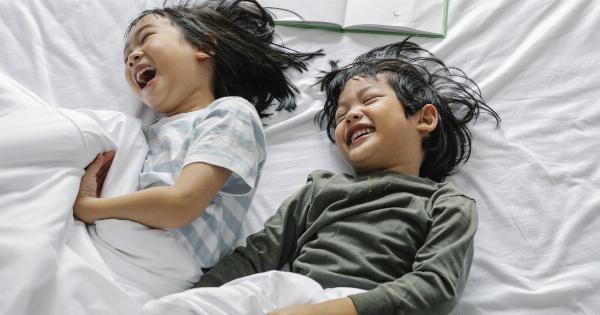Insomnia, a sleep disorder characterized by difficulty falling asleep or staying asleep, affects millions of people worldwide. While anyone can experience occasional bouts of sleeplessness, certain demographic groups are more prone to chronic insomnia.
Understanding the demographics that are most affected by insomnia can help researchers, healthcare professionals, and individuals alike develop strategies to manage and treat this condition.
1. Gender Differences in Insomnia
Studies have consistently shown that women are more likely to experience insomnia than men. This gender disparity may be attributed to hormonal changes during the menstrual cycle, pregnancy, and menopause.
Women often report symptoms such as difficulty falling asleep, waking up frequently during the night, or waking up earlier than desired.
2. Age and Insomnia
While insomnia can affect individuals of all ages, research suggests that older adults are more likely to experience this sleep disorder. As people age, their sleep patterns change, making it more challenging to get quality sleep consistently.
Factors such as underlying health conditions, pain, medication side effects, and an increased prevalence of mental health disorders in older adults contribute to higher rates of insomnia.
3. Insomnia in Adolescents
Insomnia is also prevalent among adolescents, affecting their daily functioning and sleep quality.
Factors such as school-related stress, extracurricular activities, late-night use of electronic devices, and irregular sleep schedules contribute to the higher incidence of insomnia in this age group. Additionally, hormonal changes during puberty can disrupt sleep patterns and lead to insomnia.
4. The Impact of Work and Insomnia
Occupational factors play a significant role in the prevalence of insomnia. People who work irregular shifts or night shifts often struggle with sleep disturbances, as their circadian rhythm is disrupted.
This includes healthcare workers, transportation professionals, and those in the hospitality industry. Additionally, job-related stress, long working hours, and a high-pressure work environment contribute to higher rates of insomnia in certain occupations.
5. Insomnia and Mental Health
There is a strong bidirectional relationship between insomnia and mental health disorders. Conditions such as anxiety, depression, bipolar disorder, and post-traumatic stress disorder (PTSD) are commonly associated with insomnia symptoms.
The presence of a mental health disorder can increase the likelihood of developing insomnia, and chronic insomnia can exacerbate existing mental health conditions, creating a vicious cycle.
6. Socioeconomic Factors and Insomnia
Socioeconomic status also plays a role in the prevalence of insomnia. Factors such as financial stress, job insecurity, and limited access to healthcare can contribute to higher rates of insomnia among lower socioeconomic groups.
Additionally, individuals with lower education levels may have less awareness about sleep hygiene practices and effective strategies for managing insomnia.
7. Insomnia in Chronic Medical Conditions
People with chronic medical conditions, such as cardiovascular disease, respiratory disorders, chronic pain, and gastrointestinal conditions, are more likely to experience insomnia.
The symptoms associated with these conditions, such as pain, discomfort, or breathing difficulties, can interfere with sleep quality and make falling asleep or staying asleep challenging.
8. Insomnia in Pregnant Women
Pregnancy-related hormonal changes, physical discomfort, and the anxieties associated with impending motherhood can contribute to higher rates of insomnia in pregnant women.
The prevalence of insomnia tends to be higher in the third trimester, as physical discomfort, frequent urination, and hormonal changes become more pronounced. Sleep disturbances during pregnancy can impact the well-being of both the mother and the developing fetus.
9. Genetic Factors and Insomnia
Studies have shown that genetic factors can influence an individual’s susceptibility to insomnia. Certain gene variants have been associated with an increased risk of developing insomnia.
However, it’s important to note that genetic predisposition is not the sole determining factor, and environmental and lifestyle factors also play significant roles in the manifestation of insomnia.
10. Insomnia in Military Personnel
Military personnel, including active duty servicemen and veterans, often face unique challenges that contribute to higher rates of insomnia.
These challenges include exposure to traumatic experiences, irregular sleep schedules, high levels of stress, unpredictable working conditions, and demanding physical requirements. Insomnia among military personnel is a significant concern, as it can impact their performance, mental health, and overall well-being.
Conclusion
Insomnia affects various demographic groups, including women, older adults, adolescents, shift workers, individuals with mental health disorders, those from lower socioeconomic backgrounds, and people with chronic medical conditions.
Understanding the demographics most affected by insomnia is crucial for developing targeted interventions and treatment strategies. By addressing the unique factors that contribute to insomnia in different demographics, healthcare professionals can provide effective support and improve the sleep quality and overall well-being of affected individuals.




























